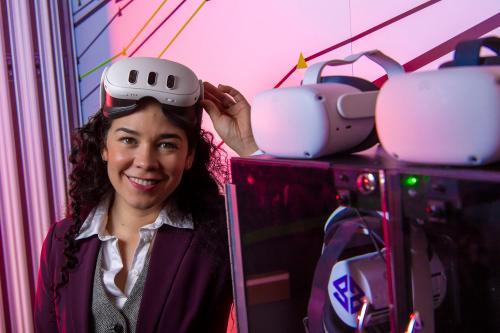Future Social Interactions in XR (FUSION)

University of Glasgow researcher Dr Julie Williamson of the School of Computing Science will deliver the project ‘Future Social Interaction in XR’, or FUSION. The project sets out to close the gap between virtual and physical spaces to create immersive new forms of social interaction online. A €2m (£1.75m) grant from the European Research Council will support the project which will last until 2028.
Objectives of the project
Dr Williamson will work to find new ways of capturing and modelling complex social signals in virtual reality (VR) and extended reality (XR) spaces.
The project’s aim is to create online experiences which use VR and XR technologies to seamlessly mix virtual avatars alongside their flesh-and-blood counterparts, creating experiences which are difficult to distinguish from real-life interactions.
Dr Williamson, a senior lecturer in human-computer interaction at the University of Glasgow, said:
What we’re aiming to do with FUSION is dissolve the barriers between virtual and physical realities to create social experiences that accurately capture the nuances of human behaviour.
The impact
In the ARC-XR lab, Dr Williamson will use cameras and sensors to observe volunteers’ voices, gestures and positions as they interact with each other in person and online using headsets, helping to build up models of social signals between people and across realities.
Analysis of those social signals will help develop a new database of behaviour patterns that persist across virtual and in-person spaces. The outputs of the analysis will help create new software that can smooth out the rougher edges of mixed-use communications and stabilise interactions to create more compelling immersive experiences.
Those stabilisation techniques could include subtle repositioning of users to create more useful group formations, or small adjustments of eyelines to better replicate in-person eye contact. When conversations overlap, the software could manipulate audio to direct the group’s attention to a single speaker.
Dr Williamson added:
Hybrid spaces which overlap virtual spaces and the real world have huge potential for allowing us to connect and collaborate online for work and play, but the technology just isn’t there yet for it to feel seamless and stable. By the end of five years of research on FUSION, we’ll have developed a powerful suite of advanced tools for creating much more realistic hybrid interactions. That could help form the foundations of a future where immersive social interactions in digital spaces become meaningful social experiences.

